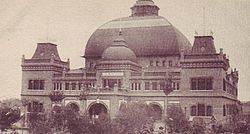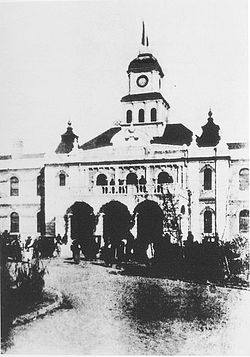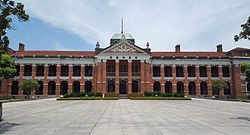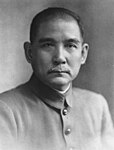1909 Chinese provincial elections
| ||||||||||
1,643 seats in all Provincial Assemblies | ||||||||||
|---|---|---|---|---|---|---|---|---|---|---|
| Registered | ~1,700,000 | |||||||||
| Turnout | 10–20% | |||||||||
| ||||||||||
 Elections held No election | ||||||||||
The 1909 Chinese provincial elections were held to elect the members of the Provincial Assemblies (or
About 1.7 million men, or 0.42 percent of a population of 410 million, were registered as eligible voters. It was marked as one of the most important episodes of Chinese democracy as "it [was] the first day in Chinese history that people can elect their representative," as promoted by newspaper Shi Pao, although a county council election in
Background




The
Electoral system
The minimum age of candidate in the elections were 30 years old and the minimum age of voter was 25. Middle-school education background and property worthy of 5,000 yuan were required for the electorate, while seventh rank for the civil office or fifth rank of military office,
The elections adopted the double voting system which was borrowed from Japan, in which the preliminary voting was to choose the electors who cast the second ballot to elect the fixed number of assembly members.[2]
Voter and membership statistics
| Province | Population | Voters | % | Seats |
|---|---|---|---|---|
| Zhili | 29,932,000 | 163,000 | 0.62 | 140 |
Fengtian |
12,133,000 | 53,000 | 0.43 | 50 |
| Jilin | 5,580,000 | 15,000 | 0.27 | 30 |
| Heilongjiang | 2,029,000 | 5,000 | 0.23 | 30 |
| Shandong | 30,988,000 | 119,000 | 0.38 | 100 |
| Henan | 35,900,000 | – | – | 96 |
| Shanxi | 12,269,000 | 54,000 | 0.43 | 86 |
| Jiangsu | 32,283,000 | 162,000 | 0.50 | 121 |
| Anhui | 16,229,000 | 78,000 | 0.48 | 83 |
| Jiangxi | 23,987,000 | – | – | 93 |
| Fujian | 15,849,000 | 50,000 | 0.39 | 72 |
| Zhejiang | 21,440,000 | 90,070 | 0.42 | 114 |
| Hubei | 25,590,000 | 113,000 | 0.38 | 80 |
| Hunan | 27,390,000 | 100,000 | 0.36 | 82 |
| Shaanxi | 10,271,096 | 29,000 | 0.29 | 63 |
| Gansu | 4,990,000 | 9,000 | 0.19 | 43 |
| Xinjiang | — | — | — | — |
| Sichuan | 48,130,000 | 191,000 | 0.39 | 105 |
| Guangdong | 28,010,000 | 142,000 | 0.49 | 91 |
| Guangxi | 8,747,000 | 40,000 | 0.46 | 57 |
| Yunnan | 9,467,000 | – | – | 68 |
| Guizhou | 9,665,000 | 42,000 | 0.42 | 39 |
| Total | 410,879,096 | 1,700,000 | 0.42 | 1,643 |
Election results
The turnout of the election was only around 10 to 20 percent. Candidates in Northeastern China faced nearly no competition and was described as "handpicked" by the officials.[3]
90 percent of the gentry who had a traditional civil examination degree, in which the examination system was abolished in 1905, were elected. The average age of the elected members was 40. The
The elected member of the provincial assemblies elected the 98 members, consisting of half of the seats, in the imperial Advisory Council. As the Constitutionalists gained grounds in the assemblies, they began to form different political groups and further pushed for the implementation of constitutional monarchy.
See also
- Democracy in China
- Provinces of China
- 1909 Chinese parliamentary election
- 1912 Chinese National Assembly election
References
- ^ a b Chang, David Cheng. "Democracy Is in Its Details: The 1909 Provincial Assembly Elections and the Print Media".
{{cite journal}}: Cite journal requires|journal=(help) - ^ a b c d Chang, P'eng-yuan. "Provincial Assemblies: The Emergence of Political Participation, 1909-1914".
{{cite journal}}: Cite journal requires|journal=(help) - ^ 張, 朋園. 立憲派與辛亥革命. pp. 17–22.
- ^ "昙花一现的"咨议局"". 中国共产党新闻.


